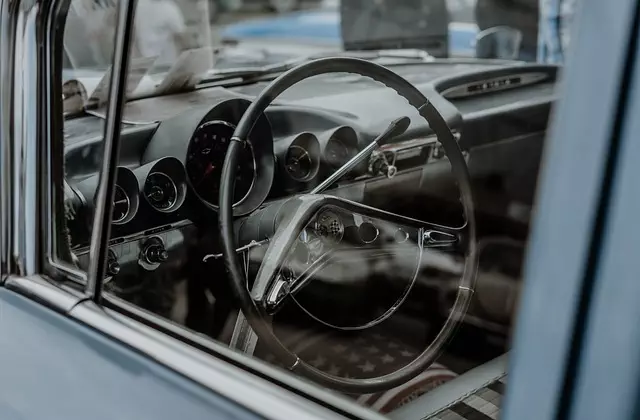Marine audio systems, designed for durability and superior sound in boating environments, require precise tuning. This involves calibrating speakers, amplifiers, subwoofers, and head units for optimal balance. In Toledo, both DIY enthusiasts and professionals can enhance their audio experience by using specialized tools to adjust crossover frequencies, bass boost levels, and gain settings. A well-tuned marine audio system delivers a rich, immersive listening experience, ensuring music and sound effects are accurately reproduced during cruising or sea adventures. Proper amplifier settings and subwoofer calibration are crucial for achieving peak performance. Professionals offer expert services, while DIYers can achieve results with the right tools and knowledge, optimizing their car audio systems for personalized pleasure.
Looking to optimize your marine audio system and enjoy a truly immersive sound experience? This comprehensive guide explores the art of marine audio system tuning. From understanding essential components to mastering DIY tune-ups, we cover everything from speaker levels and crossovers to subwoofer calibration and amplifier settings. Learn when to seek professional car audio tuning services in Toledo for a customized, high-performance setup. Elevate your marine audio journey with these expert insights and tips for a superior listening experience on the open waters.
- Understanding Marine Audio Systems: Components and Basics
- The Importance of Proper Tuning for Optimal Sound Experience
- DIY Car Audio Tune-Up: Tools and Equipment Required
- Step-by-Step Guide to Adjusting Speaker Levels and Crossovers
- Calibrating Subwoofers for Maximum Bass Response
- Optimizing Amplifier Settings for Efficient Power Delivery
- Professional Car Audio Tuning Services: When to Seek Expert Help
Understanding Marine Audio Systems: Components and Basics
Marine audio systems are designed to withstand the unique challenges of a boating environment while delivering high-quality sound. Understanding the components and basic principles behind these systems is crucial for anyone looking to achieve optimal performance, whether through a DIY car audio tune-up in Toledo or a professional car audio tuning service.
These systems typically include speakers, amplifiers, subwoofers, and a head unit, each playing a vital role. The head unit acts as the control center, allowing users to adjust settings and select music sources. Amplifiers boost the signal from the head unit, ensuring enough power reaches the speakers. Speakers are strategically placed throughout the vessel to provide even sound distribution, while subwoofers enhance low-frequency response for a richer audio experience. Proper tuning involves calibrating these components to work in harmony, resulting in clear highs, balanced mids, and powerful lows—all essential aspects of a successful car audio system tune-up, whether it’s a DIY project or a professional service.
The Importance of Proper Tuning for Optimal Sound Experience
Proper tuning is essential for achieving optimal sound quality from any marine audio system. A well-tuned system ensures that every frequency range—from deep bass to crisp treble—is balanced and harmonious, providing a rich and immersive listening experience both on the open water and in port. Whether you’re enjoying a cruise with friends or navigating through choppy seas, a finely tuned car audio system in Toledo enhances your journey by reproducing music and sound effects accurately and without distortion.
For DIY enthusiasts, learning the basics of car audio system tune-up can be rewarding. Adjusting settings like crossover frequencies, bass boost levels, and equalization curves allows you to customize the sound to your preference. However, achieving professional-grade results often requires specialized equipment and knowledge. Professional car audio tuning services leverage advanced tools and expertise to fine-tune every component of your marine audio system, ensuring it performs at its best in varying environmental conditions.
DIY Car Audio Tune-Up: Tools and Equipment Required
When it comes to a DIY car audio system tune-up in Toledo, the right tools and equipment are essential for achieving professional results. Start by gathering a set of high-quality measuring devices, including a voltmeter, oscilloscope, and signal analyzer. These instruments will help you assess the performance and health of your audio components. Additionally, secure a set of calibration weights or adjustable load resistors to simulate different listening environments.
For precise adjustments, invest in an amplifier test bench or a simulated speaker load. These tools allow for accurate testing and fine-tuning of your car audio system. Don’t forget the necessary cables, connectors, and adaptors to ensure seamless integration during the tune-up process. With these essential items at hand, you’re well-equipped to embark on optimizing your car audio experience, whether aiming for professional tuning standards or simply enhancing your DIY setup.
Step-by-Step Guide to Adjusting Speaker Levels and Crossovers
Adjusting speaker levels and crossovers is a crucial part of achieving optimal sound performance in any marine audio system. Here’s a step-by-step guide tailored for both DIY enthusiasts and those considering professional car audio tuning in Toledo.
1. Identify Your Speakers: Start by understanding your speaker setup. Different speakers have different requirements, so consult your manufacturer’s guidelines to know the ideal frequency response and power handling capabilities. This knowledge will guide you in setting appropriate crossover points.
2. Measure and Adjust Speaker Levels: Use a voltmeter to measure the voltage at each speaker terminal while the audio system is playing music. Aim for a consistent voltage across all speakers, typically between 8-16 volts. If one speaker has significantly lower or higher voltage, adjust the corresponding amplifier settings until balance is achieved.
3. Set Crossover Frequencies: Crossovers divide incoming sound signals into different frequency bands, directing specific ranges to appropriate speakers. For a standard car audio system, you might set a low-pass filter around 80 Hz for subwoofers and a high-pass filter around 5 kHz for tweeters. Fine-tune these settings using an oscilloscope or graphic equalizer to ensure clear sound separation.
4. Optimize Bass and Treble: Use the amplifier’s equalization controls to fine-tune the bass (low frequencies) and treble (high frequencies). Aim for a balanced sound, enhancing the details in both ranges without overpowering any specific frequency. This step requires subjective listening, so adjust settings until you achieve the desired audio signature.
5. Test and Refine: After initial adjustments, test your system thoroughly by playing various types of music. Listen critically to different genres and sources to ensure consistent performance across the entire spectrum. Make incremental adjustments based on your observations until you reach the desired sound quality.
Calibrating Subwoofers for Maximum Bass Response
Calibrating subwoofers is a crucial step in achieving maximum bass response from your marine audio system. It involves fine-tuning the subwoofer’s settings to ensure it delivers the deepest, clearest bass notes possible. This process typically starts with measuring the subwoofer’s frequency response using specialized equipment to identify any discrepancies or peaks that could distort sound quality.
Once these issues are pinpointed, adjustments can be made to the amplifier gain, crossover frequencies, and subwoofer settings. For a DIY car audio tune-up in Toledo, Ohio, or a professional car audio tuning service, experts will use this data to optimize performance. The goal is to achieve a balanced sound where bass is powerful and precise without overwhelming other frequencies, ensuring an enjoyable listening experience for all types of music lovers.
Optimizing Amplifier Settings for Efficient Power Delivery
Optimizing amplifier settings is a crucial step in achieving optimal sound quality and performance from your marine audio system. In a car audio system tune-up, Toledo residents can expect professionals to carefully adjust gain, bass boost, and crossover frequencies to ensure every component receives the right power for efficient operation. This process involves balancing the amplifier’s output with the speaker’s sensitivity, preventing clipping or distortion that can damage equipment.
For a DIY car audio tune-up, enthusiasts should focus on understanding their amplifier’s controls. Adjusting gain levels ensures the amp operates within its linear range, maximizing signal integrity and power delivery. Bass boost settings should be tailored to your speakers’ capabilities, enhancing low frequencies without causing overload. Crossovers, which divide audio signals for different speakers, must be precisely set to avoid frequency overlap or loss, ensuring a clear and balanced soundstage.
Professional Car Audio Tuning Services: When to Seek Expert Help
Many car enthusiasts in Toledo enjoy enhancing their vehicles with a superior car audio system. While some opt for a DIY car audio tune-up as a cost-saving measure, there are instances where enlisting professional car audio tuning services is the best course of action. A professional tuning service can ensure that your audio system delivers optimal sound quality and performance, tailored to your specific preferences.
Experts in this field have the specialized equipment and knowledge to fine-tune various components, from equalizers to amplifiers, ensuring a seamless auditory experience. They understand the nuances of room acoustic treatments and speaker placement, crucial factors for achieving balanced sound throughout a vehicle’s interior. By seeking expert help, you can avoid common mistakes and ensure your car audio system tune-up in Toledo is executed flawlessly, enhancing your driving pleasure with rich, immersive sounds.


